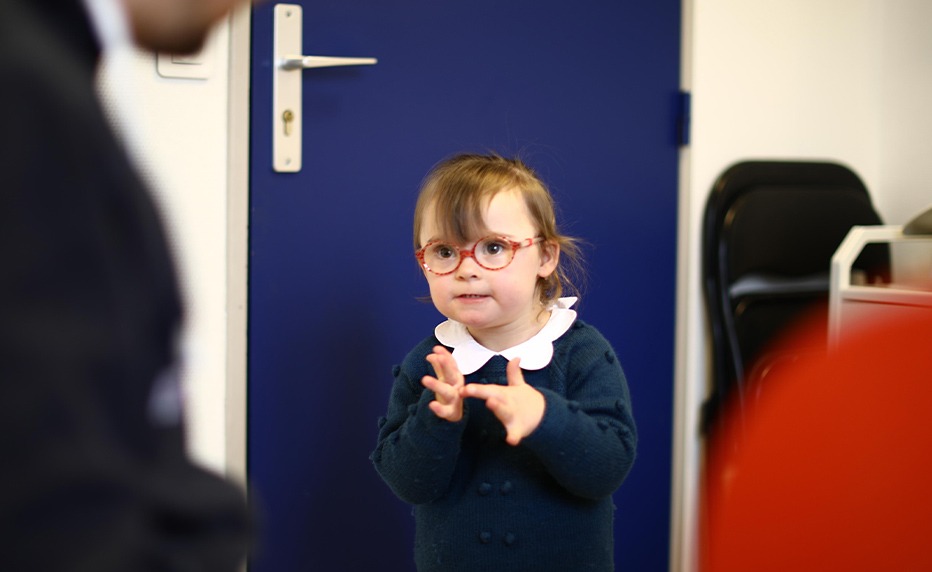Communication is essential to a person’s development, and so one of the major challenges of speech therapy is to enable the person to communicate, if not through oral language, then through alternative means of communication.

Some patients don’t speak, and sometimes never speak or speak very little. But that doesn’t mean they can’t communicate.
Speech therapy offers these patients alternative communication tools. One of the best-known is Makaton©, which combines signs, pictograms and spoken language. This involves signing the key words of each sentence, without the syntax, thus highlighting them and simplifying comprehension or expression for the patient. This requires those close to the patient to have a certain mastery of signs, and to simplify and adapt their language to enable the exchange to take place. Just as a child learns to speak because he hears himself being spoken to, a child with language difficulties will only use signs if he is addressed in this way.
As speech therapist Bénédicte Ronssin recounts, “This was the case with one of my patients, who hardly spoke at all when he was with his family, but communicated a lot with me, simply because his family didn’t use signs, even though they enabled him to express himself.” Rosalie Delille, also a speech therapist, testifies to the same experience on several occasions: “Parents are sometimes very surprised to see the child reproduce the signs I show him, when they themselves don’t use them.“
It is essential to deploy alternative solutions for the person experiencing communication difficulties, as an inability to communicate can lead to a real lack of awareness of emotions, for want of being able to express them, and to behavioral disorders. A case in point is that of a young patient who was suspected of having autism because of her behavioral problems, which were the consequence of a deafness that had never been detected. The disorders she was developing were linked to the major communication difficulties she was encountering, due to the lack of tools adapted to her deafness.
The other aspect of this Makaton© program is the use of pictograms: the person can express what they want by showing or giving a picture to the person they are talking to. This has the advantage of being accessible to people with praxis problems, who therefore have difficulty signing, and of being visually permanent, which can help the person retain what is being said. However, if the person is able to make himself understood, it is not certain that he will have the same level of comprehension when addressed. Some patients give the illusion of understanding what is said to them, when this is not always the case. This calls for special attention, and a simplification of language on the part of those around them.
“Parents of young children often ask whether their child will ever speak. I usually tell them that the most important thing is for their child to be able to communicate: if it’s not through oral language, it will be in other ways“, says Bénédicte. Many of the families concerned are saddened that there is no medication to improve language. Of course, there’s no such thing as a miracle pill, and we have to accept that language disorders are part and parcel of intellectual disability. However, there are proven solutions for improvement, such as augmentative and alternative communication (AAC) and rehabilitation. However, the first “drug” in speech therapy is the patient’s environment, which stimulates him or her through its demands. The speech therapist’s work is in vain if it has no echo in the person’s daily life.
Speech therapy consultations are by prescription only, and the Institut is no exception to this rule. “When patients see the Institut’s speech therapist, it’s at the request of a doctor“, explains Thérèse Balmitgère, speech therapist at the Institut. These consultations, lasting an average of 1.5 hours, are organized into three stages: firstly, the interview, during which the speech therapist asks questions about the patient’s life and habits; secondly, observation of the way in which he or she plays, expresses himself or herself and understands; and thirdly, a time of conclusion and recommendations, intended for the parents. When the family is fortunate enough to have a speech therapist in town who follows their child, the Institute’s speech therapist can liaise with the latter to discuss and reflect together. Patients of all ages are seen by the Institute’s speech therapist, because speech therapy can begin as early as birth, with massage or stimulation, which can also be provided by the parents. This will promote the child’s development, not only in language but also in swallowing, for example. However, it’s never too late to start. “I knew a patient in his thirties who stuttered a lot: by following the pictograms with his finger, he was able to become more intelligible“, says Bénédicte.
Speech therapy is therefore essential, because of its ability to prevent language or behavioral disorders, or to improve a person’s quality of life, provided it is based on an alliance between the practitioner and the family and friends who agree to continue the work at home.

Your registration has been taken into account